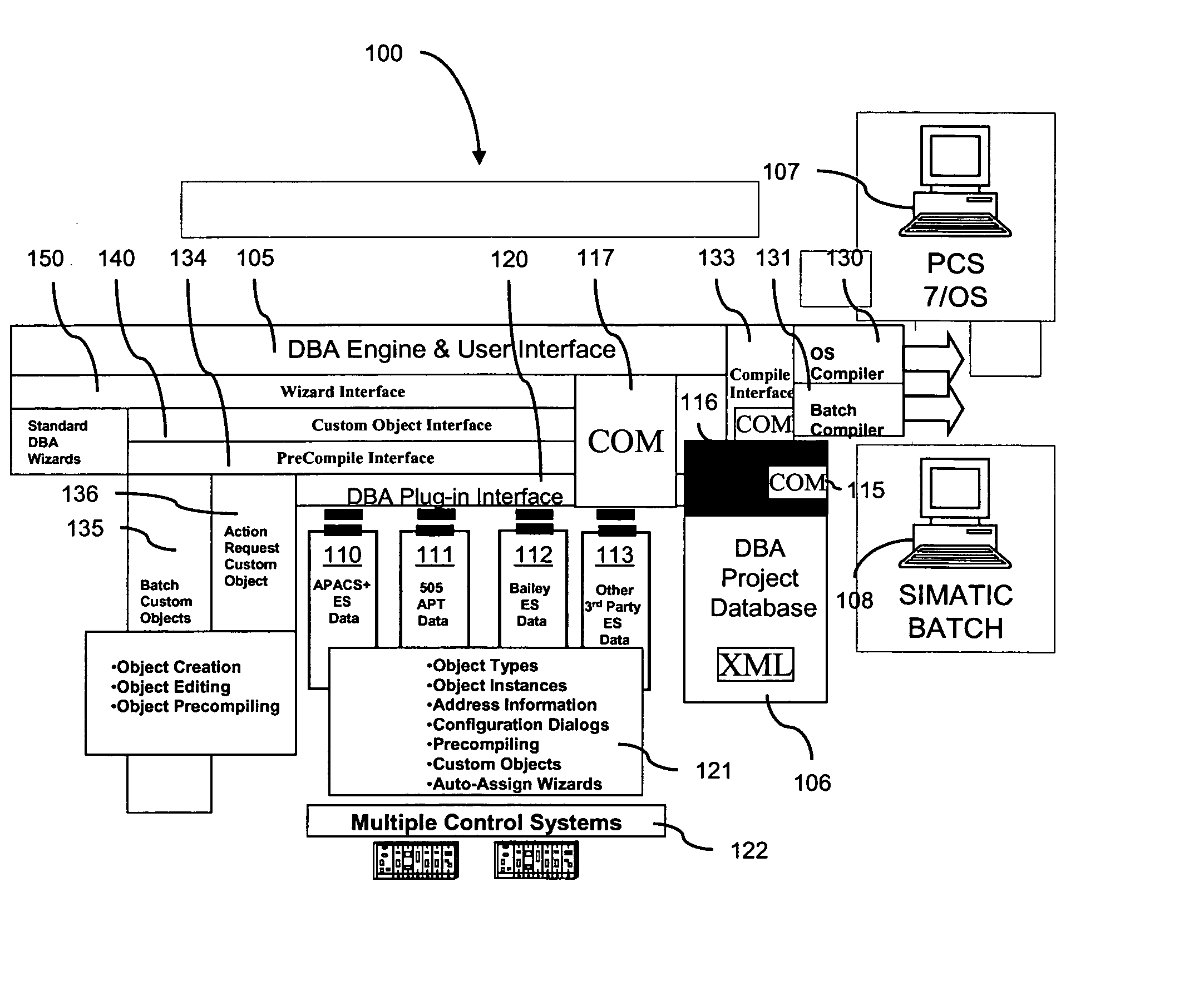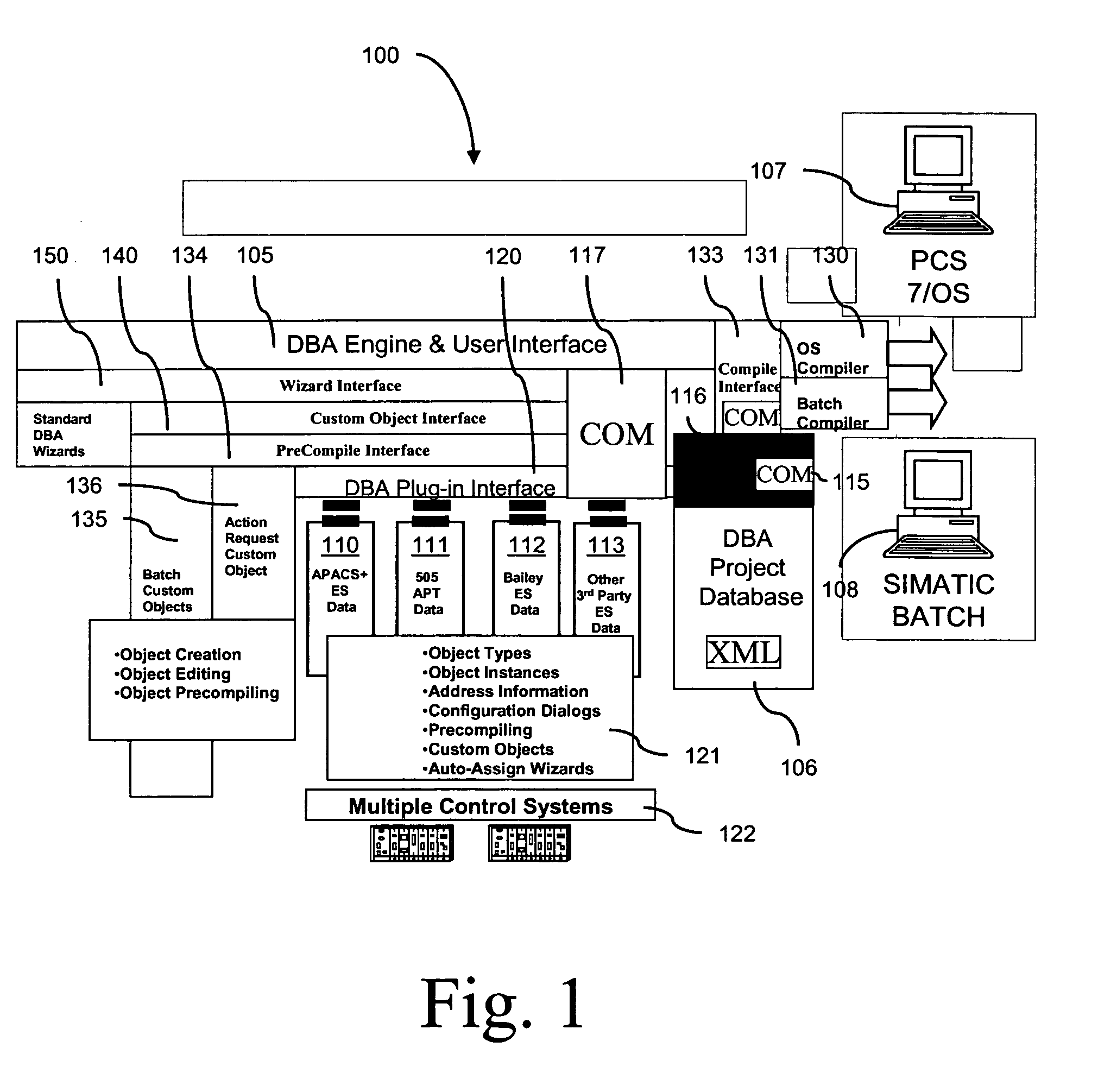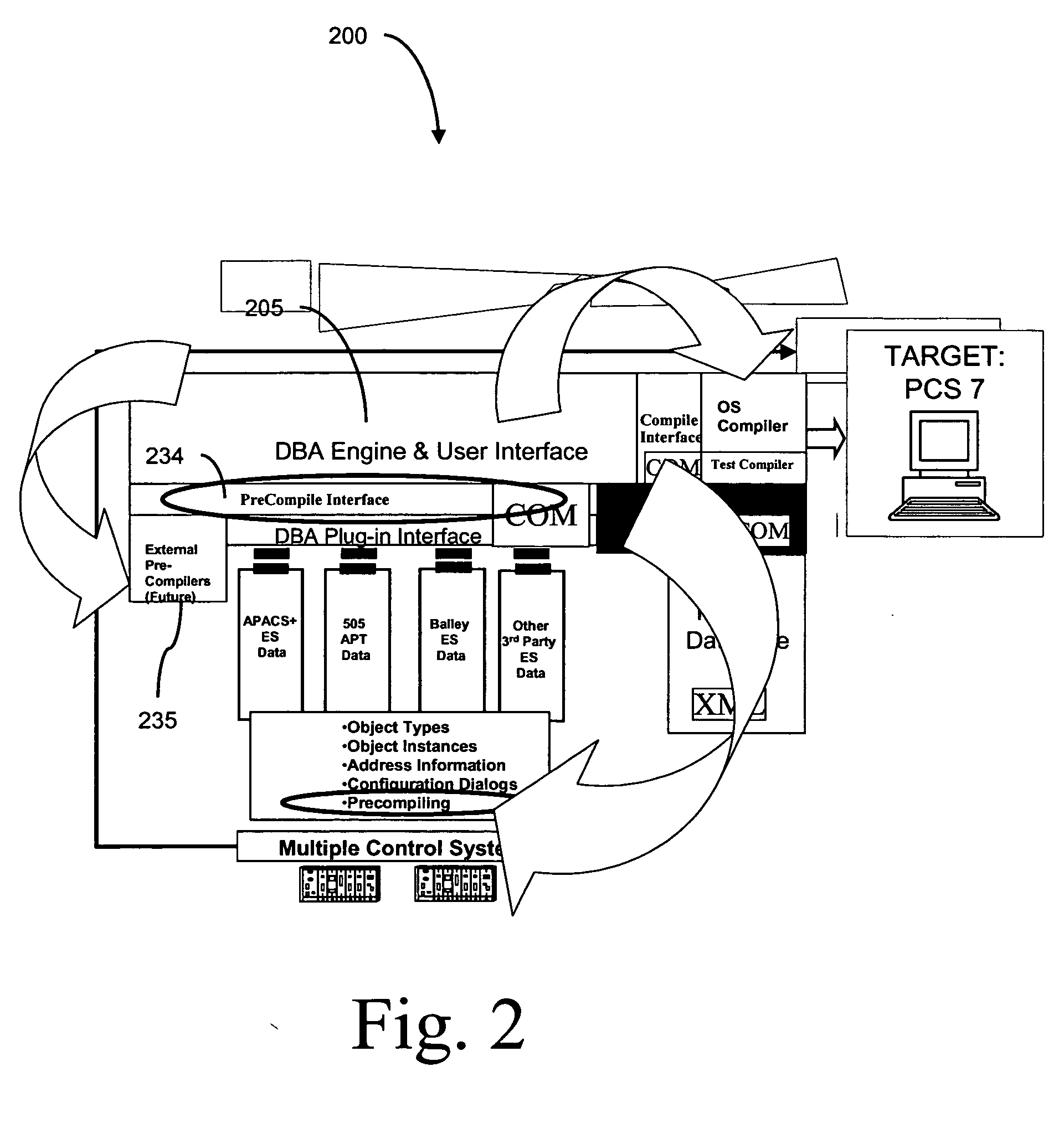Generic framework for porting legacy process automation assets to a new control system
a technology of process automation and control system, applied in the field of process automation, can solve the problems of complex objectives, increasing the cost of automation assets,
- Summary
- Abstract
- Description
- Claims
- Application Information
AI Technical Summary
Benefits of technology
Problems solved by technology
Method used
Image
Examples
Embodiment Construction
[0040] The present invention is an extensible, object-oriented framework that describes various generic elements of legacy automation systems and which is used as a basis for porting one or more of those elements to another (“target”) automation system.
Definitions
[0041] Many of the terms used in the present specification have been assigned more than one meaning in the terminology commonly used in the art. For that reason, the following general definitions are provided to indicate the intended meaning of those terms as used herein:
[0042] Class: A class provides an implementation of all of the methods and properties of one or more interfaces. Classes provide the code used when each function is called by a controller of the class.
[0043] Compiler: In the context of the present invention, an object that translates generic configuration information into a form that is suitable for using as configuration information for a specific system.
[0044] Declarative Language: a language that d...
PUM
 Login to View More
Login to View More Abstract
Description
Claims
Application Information
 Login to View More
Login to View More - R&D
- Intellectual Property
- Life Sciences
- Materials
- Tech Scout
- Unparalleled Data Quality
- Higher Quality Content
- 60% Fewer Hallucinations
Browse by: Latest US Patents, China's latest patents, Technical Efficacy Thesaurus, Application Domain, Technology Topic, Popular Technical Reports.
© 2025 PatSnap. All rights reserved.Legal|Privacy policy|Modern Slavery Act Transparency Statement|Sitemap|About US| Contact US: help@patsnap.com



